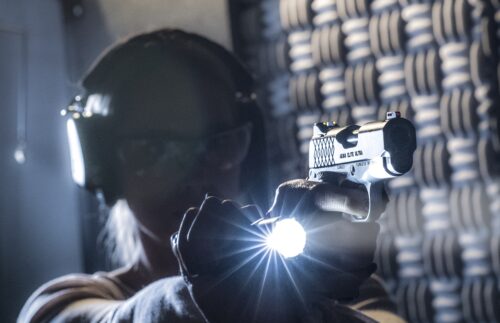If you are looking for a new flashlight, you might be confused by the terms lumens and candela. What do they mean, and which one is more important for your needs? These two terms measure different aspects of a flashlight’s performance, and they are both useful to know when choosing the best light for your needs.
Lumens measure the total amount of light output by a source, regardless of the direction or spread of the light. For example, a standard 60-watt incandescent bulb emits about 800 lumens of light in all directions. Lumens are useful for comparing the brightness of different light sources, or for calculating how much light is needed to illuminate a certain area.
Candela measures the intensity of light in a specific direction, or how bright the light appears to the human eye from a certain point of view. For example, a flashlight may have a high candela value because it concentrates its light into a narrow beam that can be seen from far away. Candela are useful for comparing the focus or directionality of different light sources, or for calculating how much light is needed to achieve a certain level of visibility.
Candela and candlepower are both used to measure the brightness of a light source, but they are not exactly the same. Candela is the modern and official unit of luminous intensity in the International System of Units (SI). Candlepower is an old and obsolete term that was based on the light produced by a standard candle. One candlepower is roughly equal to one candela, but candela is more precise and consistent.
A flashlight light with a high lumen output will produce more light overall, but it may not be very bright in a particular direction. A flashlight with a high candela output will produce a more focused beam of light, but it may not illuminate a wide area.
Lumens and candela are related by a number called solid angle. Solid angle tells you how wide the flashlight beam is. A narrow beam has a small solid angle, and a wide beam has a large solid angle. For example, a flashlight with 1,000 candela and a solid angle of 1 has 1,000 lumens. A flashlight with 1,000 candela and a solid angle of 2 has 2,000 lumens.
So, what is more important. Is it lumens or candela? The answer depends on your intended use of the flashlight. If you need a flashlight that can illuminate a large area, you might want to look for a high lumen output. This will ensure that you can see everything around you clearly and comfortably. However, if you need a flashlight that can reach far distances, you might want to look for a high candela output. This will ensure that you can see objects or people that are far away from you and that your light can be seen by others.
An EDC flashlight should have a combination of spot and flood (spill) beams. You need sufficient throw to be able to identify objects at a distance. You also need sufficient flood to provide peripheral illumination for situational awareness. The desired balance will depend on the application.
From a self-defense perspective, a higher candela white light can create or better penetrate a photonic barrier. A photonic barrier can occur when a light source is so bright or directional that it does not allow objects or individuals beyond it or adjacent to it to be identified, thus concealing their visibility from the observer. It can also momentarily blind a potential assailant. A higher candela will also better penetrate tinted windows, important in law enforcement applications.
Of course, there are other factors that affect the performance of a flashlight besides lumens and candela. For example, the quality of the LED, the type and capacity of the battery, the design and material of the reflector or lens, and the mode settings and features of the flashlight can all influence how bright and efficient the light is. Therefore, it is important to compare different flashlights based on their specifications and reviews before making a purchase.
To sum up, lumens and candela are both important measurements of a flashlight’s performance, but they are not interchangeable. Lumens measure the total amount of light that a flashlight emits, while candela measure the amount of light that a flashlight emits in a specific direction. Depending on your needs and preferences, you might want to look for a flashlight that has either a high lumen output or a high candela output, or both. However, you should also consider other factors that affect the quality and functionality of the flashlight before making your final decision.
*The views and opinions expressed on this website are solely those of the original authors and contributors. These views and opinions do not necessarily represent those of Spotter Up Magazine, the administrative staff, and/or any/all contributors to this site.

